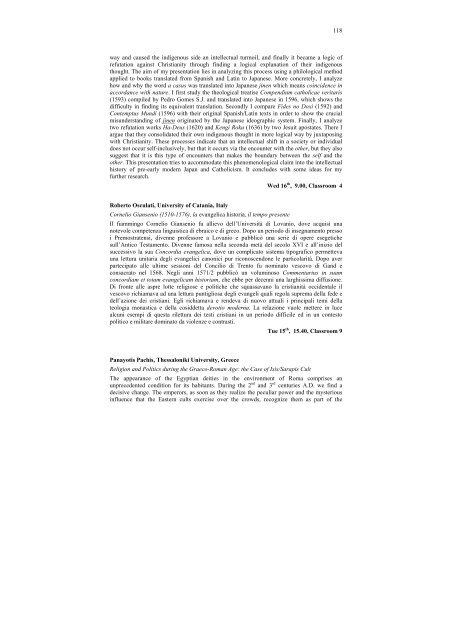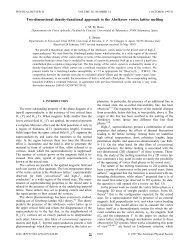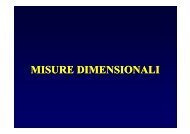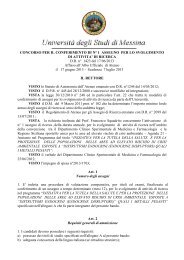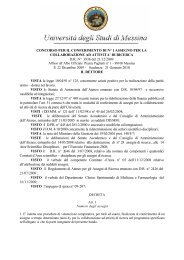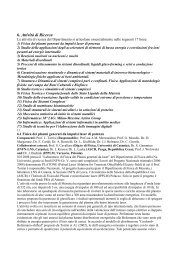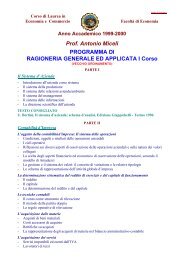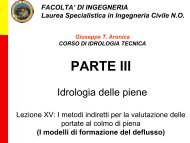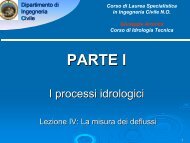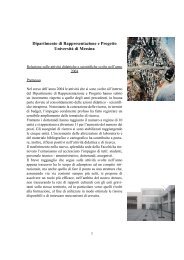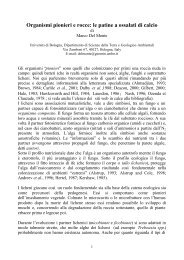PROGRAMME AND ABSTRACTS - Università degli Studi di Messina
PROGRAMME AND ABSTRACTS - Università degli Studi di Messina
PROGRAMME AND ABSTRACTS - Università degli Studi di Messina
You also want an ePaper? Increase the reach of your titles
YUMPU automatically turns print PDFs into web optimized ePapers that Google loves.
118<br />
way and caused the in<strong>di</strong>genous side an intellectual turmoil, and finally it became a logic of<br />
refutation against Christianity through fin<strong>di</strong>ng a logical explanation of their in<strong>di</strong>genous<br />
thought. The aim of my presentation lies in analyzing this process using a philological method<br />
applied to books translated from Spanish and Latin to Japanese. More concretely, I analyze<br />
how and why the word a casus was translated into Japanese jinen which means coincidence in<br />
accordance with nature. I first study the theological treatise Compen<strong>di</strong>um catholicae veritaris<br />
(1593) compiled by Pedro Gomes S.J. and translated into Japanese in 1596, which shows the<br />
<strong>di</strong>fficulty in fin<strong>di</strong>ng its equivalent translation. Secondly I compare Fides no Doxi (1592) and<br />
Contemptus Mun<strong>di</strong> (1596) with their original Spanish/Latin texts in order to show the crucial<br />
misunderstan<strong>di</strong>ng of jinen originated by the Japanese ideographic system. Finally, I analyze<br />
two refutation works Ha-Deus (1620) and Kengi Roku (1636) by two Jesuit apostates. There I<br />
argue that they consolidated their own in<strong>di</strong>genous thought in more logical way by juxtaposing<br />
with Christianity. These processes in<strong>di</strong>cate that an intellectual shift in a society or in<strong>di</strong>vidual<br />
does not occur self-inclusively, but that it occurs via the encounter with the other, but they also<br />
suggest that it is this type of encounters that makes the boundary between the self and the<br />
other. This presentation tries to accommodate this phenomenological claim into the intellectual<br />
history of pre-early modern Japan and Catholicism. It concludes with some ideas for my<br />
further research.<br />
Roberto Osculati, University of Catania, Italy<br />
Cornelio Giansenio (1510-1576), la evangelica historia, il tempo presente<br />
Wed 16 th , 9.00, Classroom 4<br />
Il fiammingo Cornelio Giansenio fu allievo dell’<strong>Università</strong> <strong>di</strong> Lovanio, dove acquisì una<br />
notevole competenza linguistica <strong>di</strong> ebraico e <strong>di</strong> greco. Dopo un periodo <strong>di</strong> insegnamento presso<br />
i Premostratensi, <strong>di</strong>venne professore a Lovanio e pubblicò una serie <strong>di</strong> opere esegetiche<br />
sull’Antico Testamento. Divenne famosa nella seconda metà del secolo XVI e all’inizio del<br />
successivo la sua Concor<strong>di</strong>a evangelica, dove un complicato sistema tipografico permetteva<br />
una lettura unitaria <strong>degli</strong> evangelici canonici pur riconoscendone le particolarità. Dopo aver<br />
partecipato alle ultime sessioni del Concilio <strong>di</strong> Trento fu nominato vescovo <strong>di</strong> Gand e<br />
consacrato nel 1568. Negli anni 1571/2 pubblicò un voluminoso Commentarius in suam<br />
concor<strong>di</strong>am et totam evangelicam historiam, che ebbe per decenni una larghissima <strong>di</strong>ffusione.<br />
Di fronte alle aspre lotte religiose e politiche che squassavano la cristianità occidentale il<br />
vescovo richiamava ad una lettura puntigliosa <strong>degli</strong> evangeli quali regola suprema della fede e<br />
dell’azione dei cristiani. Egli richiamava e rendeva <strong>di</strong> nuovo attuali i principali temi della<br />
teologia monastica e della cosiddetta devotio moderna. La relazione vuole mettere in luce<br />
alcuni esempi <strong>di</strong> questa rilettura dei testi cristiani in un periodo <strong>di</strong>fficile ed in un contesto<br />
politico e militare dominato da violenze e contrasti.<br />
Panayotis Pachis, Thessaloniki University, Greece<br />
Tue 15 th , 15.40, Classroom 9<br />
Religion and Politics during the Graeco-Roman Age: the Case of Isis/Sarapis Cult<br />
The appearance of the Egyptian deities in the environment of Roma comprises an<br />
unprecedented con<strong>di</strong>tion for its habitants. During the 2 nd and 3 rd centuries A.D. we find a<br />
decisive change. The emperors, as soon as they realize the peculiar power and the mysterious<br />
influence that the Eastern cults exercise over the crowds, recognize them as part of the


